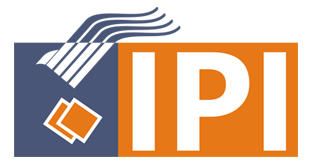Perbedaan Hasil Belajar Matematika Melalui Metode Team Assisted Individualization dan Metode Drill
(1) Teknik Informatika, Universitas Indraprasta PGRI
(*) Corresponding Author
Abstract
Keywords
Full Text:
PDF (Indonesian)References
Departemen Pendidikan Nasional. (2003). Undang-undang Republik Indonesia Nomor 20 Tahun 2003 tentang Sistem Pendidikan Nasional. Depdiknas: Jakarta
Djamarah, S. B., & Zain, A. (2013). Strategi Belajar Mengajar. Jakarta: Rineka Cipta.
Karim. (2016). Penerapan Model Pembelajaran Kooperatif Tipe Team Assisted Individualization (TAI) untuk Melatih Kemampuan Pemecahan Masalah Matematis Siswa SMA. Jurnal Pendidikan Matematika, Vol. 4 No. 1 Tahun 2016. 58-67.
Roestiyah, N. K. (2012). Strategi Belajar Mengajar. Jakarta: Rineka Cipta.
Sanjaya, Wina. (2005). Pembelajaran dalam Implementasi Kurikulum Berbasis Kompetensi. Jakarta: Kencana Prenada Media Group.
Sanjaya, Wina. (2006). Strategi Pembelajaran Berorientasi Standar Proses Pendidikan. Jakarta: Kencana Prenada Media Group.
Slameto. (2003). Belajar dan Faktor-Faktor yang Mempengaruhinya. Jakarta: Rineka Cipta.
Slavin, E Robert. (2008) Cooperative Learning: Teori, Riset, dan Praktik. Bandung: Nusa Media.
Suprijono, Agus. (2009). Cooperatif Learning Teori & Aplikasi Paikem. Yogyakarta: Pustaka Belajar.
Susilawati, Dyah. (2015). Eksperimentasi Model Pembelajaran Kooperatif Tipe Team Assisted Individualization (TAI) dengan Guided Note Taking (GNT) pada Materi Bangun Ruang Ditinjau dari Aktivitas Belajar Siswa Kelas VIII SMP Negeri Se-Kabupaten Klaten Tahun Pelajaran 2013/2014. Jurnal Elektronik Pembelajaran Matematika, Vol. 3 No. 3 Tahun 2015. 313-325.
Sutarmiyati. (2016). Penggunaan Metode Drill pada Materi Ajar Penjumlahan Bilangan Pecahan. Jurnal Penelitian Pendidikan Indonesia, Vol. 1 No. 1 Tahun 2016. 45-50.
DOI: http://dx.doi.org/10.30998/sap.v1i3.1303
Refbacks
- There are currently no refbacks.
Copyright (c) 2017 SAP (Susunan Artikel Pendidikan)
SAP (Susunan Artikel Pendidikan) indexed by:






Ciptaan disebarluaskan di bawah Lisensi Creative Commons Atribusi 4.0 Internasional.
View My Statis
Contact Campus A TB. Simatupang, Jl. Nangka Raya No.58C Tanjung Barat, Kec. Jagakarsa - Jakarta Selatan 12530 Telp : (021) 7818718, (021) 78835283 Campus B Jl. Raya Tengah N0.80 Kel. Gedong, Kec. Ps. Rebo - Jakarta Timur 13760 Telp : (021) 87781300, (021) 87797409



 Accredited Certificate
Accredited Certificate
 Tamplate Journal
Tamplate Journal




















